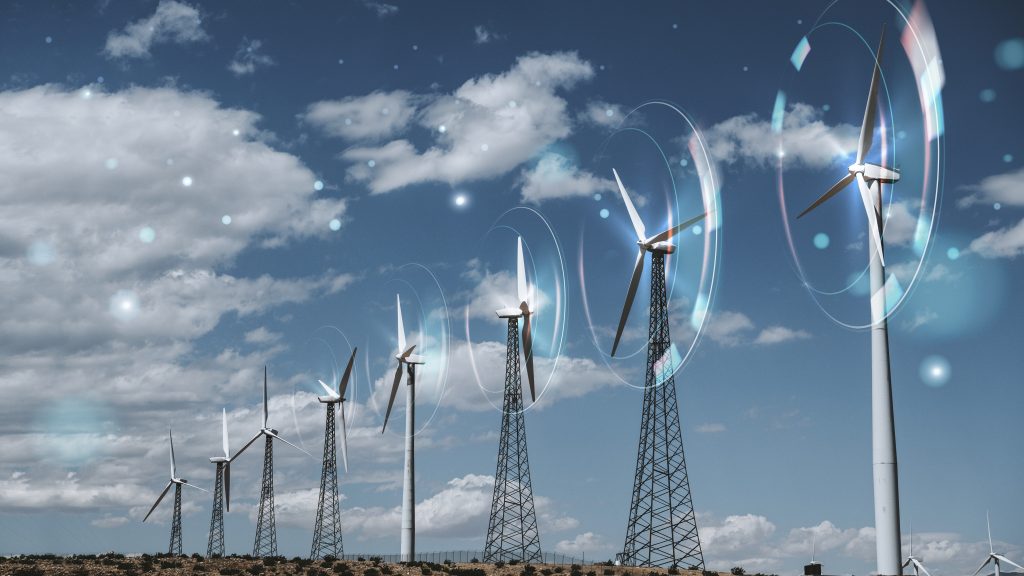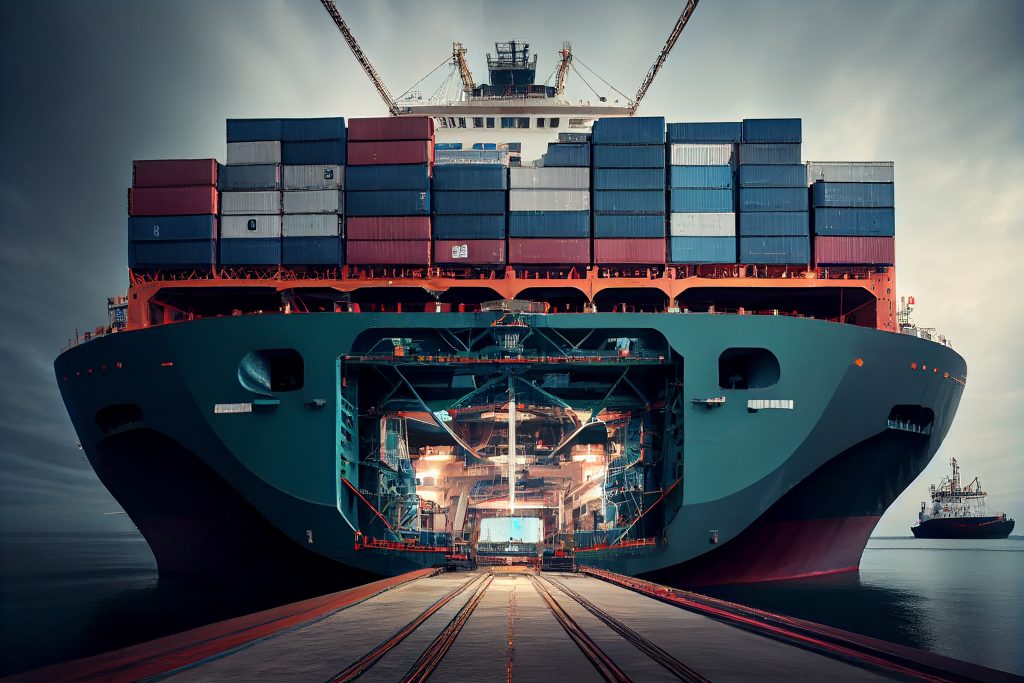Contact Information
London
15 Half Moon Street, London W1J7DZ

Boe Pahari, Founder of VisionEdgeOne, explains how the VisionEdgeOne team imagine, analyse and execute infrastructure investment opportunities that we believe are best positioned to benefit from the evolving market landscape. VisionEdgeOne recognises that technology, globalisation, demographics and the environment are often the root causes of disruption and the interaction between these factors gives rise to new megatrends that will shape the infrastructure of tomorrow.
The Four Sectors and how to approach them
We see opportunities in the following four sectors: Digital, Energy, Logistics and Urban. VE1 believes that these sectors are particularly well placed to benefit from the evolution of infrastructure and positively contribute to the sustainability of the products and services that support modern living. In identifying the infrastructure of tomorrow, VE1 seeks to look beyond sector definitions and source opportunities that are at various stages on the journey to transitioning to infrastructure – that is, proven business models, technologies and ideas that VE1 has recognised, over time, will benefit from rapid market acceptance.
Opportunities in the digital sector
Global demand for broadband communication and information services has soared in recent times, intensified by Covid-19. Digital connectivity became a lifeline for using data, consuming content and engaging in digital applications by individuals, governments and businesses, ensuring continuity of economic and social activities in light of social distancing and lockdown measures across the world. 1 As a result, along the entire internet value chain, fixed and mobile broadband operators, content and cloud providers, and points where internet networks connect to each other to exchange traffic (internet exchange points), experienced as much as 60% more internet traffic relative to pre-pandemic levels. 2

New technological developments, such as the Internet of things (IoT), cloud and edge computing and connected devices are driving growth in demand for data, placing increasing pressure on digital and network resources. Today, there are more than 25 billion devices connected globally and the number of connected devices is projected to exceed 41 billion by 2027, which is especially driven by growth in number of machine-to-machine (M2M) and IoT devices. 3 Between 2021 and 2027, the number of short-range IoT devices connected through unlicensed radio technologies (e.g. Wi-Fi, Bluetooth, Zigbee) is projected to grow by 12%, while the number of wide-area IoT devices using cellular connections (e.g. 2G-5G, NB-IoT/Cat-M) is projected to grow by 19%. 4 The rollout of 5G will be fundamental to service delivery in the newly- hyperconnected world and estimates suggest that 5G could unlock around USD 13.2 trillion in economic value globally by 2035 as a wave of intelligent technologies are built on top of 5G as the innovation platform 5 . In this technological age, society is moving into a new space of connected machines, vehicles, and wearables. From within these spaces, we expect entire new enterprises and business models will emerge and deliver new value opportunities and automation across manufacturing, transport, healthcare, and energy.
For example, critical applications such as security and fire monitoring, telecare, and utility services are increasingly connected to enhance reliability, resilience, and data capture. Many companies are exploring the use of artificial intelligence (AI) and data analytics to transition to software-as-a-service (SaaS) models. In infrastructure maintenance, multi-sensory AI-based inspection systems allow needs-based maintenance to replace fixed or periodic maintenance cycles. As these SaaS business models gradually become an essential service to the underlying customers and clients, these companies could become compelling infrastructure investments themselves.
Increasingly, telecommunications operators are divesting their active infrastructure-like network equipment to a neutral operator 6 , as previously witnessed with passive assets like towers. As well as raising capital, these transactions reduce the operators’ long-term capex requirements and create opportunities for infrastructure funds to own and operate the network infrastructure. In parallel, investment in terrestrial fibre networks and data centres is also crucial to support our increasingly connected societies; hyperscale tech giants are driving global investment in data centres. 7 In a number of geographies, these firms rely on big data centre operators rather than building their own capacity however there remains white space for neutral, multi-tenanted data centres, targeting enterprise and government customers, and these may either become targets for, or drivers of, consolidation 8 .
VE1 intends to focus primarily on the following sub-sectors of digital and communications infrastructure: Last mile connectivity, towers and small cells, IoT, broadband fibre networks, sustainable data centres, and cloud infrastructure.
Opportunities in the energy sector
In the power sector, growing energy demand has combined with escalating geopolitical tensions, environmental concerns, rising power prices and regulatory pressures to fuel the adoption of emerging technologies, such as renewable power, distributed generation, smart grids and battery storage as sustainable alternatives to coal, oil, and gas. The value of the renewable energy market is set to grow from USD 880 billion to nearly USD 2 trillion by 2030 9 as the switchover from fossil fuels to renewables accelerates.

As with most sectors, AI is having transformative effects across energy and utilities. The World Economic Forum predicts that AI will play an essential role in the world’s transition to clean energy, creating efficiencies through more accurate forecasting of supply and demand. 10
Power companies are also using other technologies to improve resilience in a more decentralised market, reduce the frequency of outages and connect to consumers. For instance, more power will be generated by smaller localised power grids e.g. solar and wind farms and coordinating the integration of these networks requires complex AI algorithms. Similarly, power companies are investing in predictive maintenance technology to drive efficiency in the operations of renewable energy creation. 11
In a decentralised market, battery storage can help smooth variations in power and overcome the intermittent and volatile nature of renewable sources. The worldwide battery storage market is estimated to more than double between 2018 and 2023, growing from USD 6.1 billion to USD 13.1 billion. 12
Energy derived from biomass or biofuel has the potential to account for a higher proportion of total energy generation. Thermal, chemical, and biological processes are increasingly used to create more efficient forms of fuel from biological matter (such as wood, or crops like sugarcane and waste materials) known as ‘waste-to-energy projects’.
Global energy consumption is projected to flatten in the coming decades. Despite rapid growth of the global economy and population growth of two billion people, energy consumption is projected to grow by only 14% 13 . Renewables are projected to lead the power generation mix, reaching 80-90% in 2050 14 . Today, Renewables share of the global electricity generation is about 30% 15 and thus a significant buildout of renewables capacity is needed.
The electrification of transport is a key lever for delivering zero emissions and realising ambitions to decarbonise transport. Global electric vehicle sales grew by 43% during 2020, and in some markets such as Norway and the Netherlands, sales now outnumber petrol and diesel cars. The increase in EV sales will correspondingly prompt growth for charging infrastructure, currently a pain point for consumers in some markets. This rapid growth has spurred innovative solutions and the development of a variety of new business models around the charge point: from owning the asset, to operating it, to offering mobility services 16 .
Accordingly, VE1 sees opportunity in renewable energy, energy efficiency, clean mobility, and smart energy infrastructure, spanning a wide range of areas, such as flexible power, energy services, utilities and power generation, energy transportation and storage, mobility services, and sustainable fuels.
Opportunities in the logistics sector
Worldwide, more than USD 2 trillion of transport infrastructure investments will be needed each year until 2040 to fuel economic development. 17 The Covid-19 pandemic resulted in a pause for much of global travel in 2020; compared with 2019, global air traffic passenger volume fell by 65 percent in 2020. Rail traffic also dropped by between 40 and 60 percent in European countries. However, this impact was only temporary, with the passenger recovery now well underway.

VE1 expects passenger and freight transport demand to grow strongly in the coming decades. We expect the rising global population and continued economic growth to increase the demand for the transport of people and goods. Total passenger demand is projected to increase from roughly 53 trillion kilometres in 2015 to between 65 trillion and 75 trillion in 2030, and 105 trillion and 125 trillion by 2050. 18
As urban areas grow and spread across the world, so too will the transport infrastructure necessary to connect them. In developing and high-growth countries, new transport infrastructure is needed to support population shifts from regional to urban areas. In mature countries, existing infrastructures need to be upgraded to bolster resilience, decarbonise, and decrease maintenance expense. The transport sector is the biggest contributor of GHG emissions at c.28% 19 and technological advances will be critical to effectively decarbonise the sector. Reducing energy consumption of road travel requires investment in cleaner vehicles and fuels. Investing in charging infrastructure for road transport will increase consumer confidence in low-emission vehicles, and digital innovation will help to deliver more efficient operation of public transport, other shared mobility services and freight logistics.
A notable example is the cold storage market, which is expected to expand at a compound annual growth rate (CAGR) of 13.4% from 2022 to 2030 20 . The growing trade of perishable products is anticipated to boost the demand for refrigerated storage solutions; however, the lack of infrastructure and associated energy consumption and emissions required to sustain the cold chain is likely to pose a major challenge for business expansion. In response, the industry is adapting to new technologies such as advanced temperature monitoring and increased automation to lower the energy footprint and increase productivity.
VE1 sees infrastructure opportunities related to the key pillars of logistics – airports, rolling stock, ports and ferries and specialist logistics such as cold storage, and intermodal freight. Adjacent and nascent sub-sectors include specialist asset leasing, urban transportation, alternative drive technologies in roads and rail to decarbonise the sector.
Opportunities in the urban sector
VE1 seeks to positively contribute to society and aid in building the smart cities of the future, to improve citizens’ quality of life and solve key urban challenges.
There are important issues to tackle when it comes to urbanisation and smart cities. According to the UN, approximately 55% of the world’s population now resides in urban areas, which is expected to grow to 68% by 2050. Cities occupy only 3 percent of the earth but account for up to 80 percent of energy consumption – as well as 75% of global waste and carbon emissions. 21 From growing urbanisation to sustainability, there are important issues and challenges to tackle when it comes to city living. This presents existing and known challenges, however, the Covid-19 pandemic has highlighted that cities also need to prepare for the unexpected and build resilient structures to better recover from such crises.

We believe that urban spaces can create sustainable economic development and high quality of life. We believe that creating an effective smart city depends on driving and investing in innovative solutions across the following six domains: Energy & Environment, Mobility, Safety & Security, Government & Education, Economy, and Living & Health. The digital, agile, and flexible urban areas of tomorrow support the efficient use of resources and easily adapt to changing demands, remaining attractive for residents and businesses in the long term. Investment in urban infrastructure aimed at implementing a vision for smart cities is projected to reach USD 375 billion by 2030 as cities invest in brownfield and greenfield projects 22 .
Digital learning is changing the future of education. This shift has been so substantial that the education technology sector, or ‘EdTech’, has grown significantly 23 . The OECD reports that global expenditure in the EdTech industry is predicted to grow from USD 163 billion in 2019 to USD 404 billion in 2025. Underpinning the transition to digital, for incumbents and new models alike, are broader consumer technology expectations with respect to mobility, personalization, social and gamified learning.
By 2050, annual waste generation is projected to increase by 70 per cent to 3.4 billion metric tons with Governments under increasing pressure to shift from a linear to a circular economy. At our current rate of consumption, we will use 300 – 400% more resources than the Earth can regenerate every year 24 . Waste-to-energy (WtE) is any process that converts waste into a source of usable energy and innovative WtE solutions are increasingly being commercialised to alleviate growing landfills 25 .
VE1 intends to focus primarily on the following aspects of urban and smart city development: health and healthtech (healthcare diagnostics and imaging, digital healthcare and telemedicine, MedTech and BioTech CDMO), education and provision of e-learning, advanced recycling (waste to energy and circular economy solutions), financial infrastructure, business service infrastructure and other infrastructure thematic investments that will support and enhance urban living.
Conclusion
By constructing a balanced portfolio of assets from these four sectors, investors can create value for stakeholders and attractive returns by investing in the growing sub-sectors that are essential to modern living.

